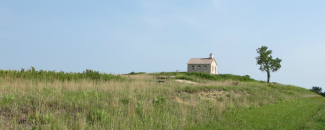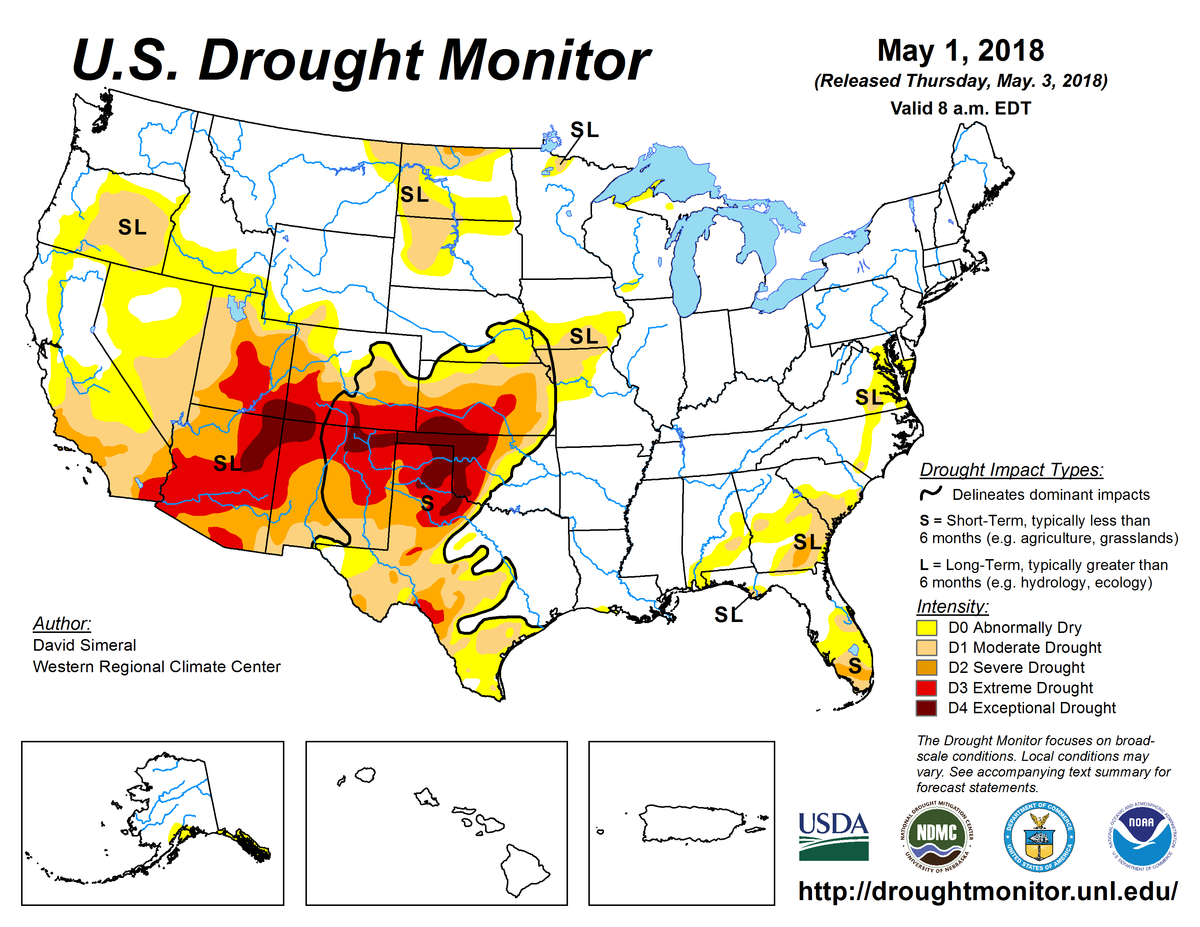
According to the May 1, 2018, U.S. Drought Monitor, moderate to exceptional drought covers 28.6% of the contiguous United States, a slight decrease from last week’s 29.0%. Extreme and exceptional drought—the worst categories—expanded to cover 8.9% of the Lower 48, up from 8.5% last week.
A series of storm systems tracked across the continental United States bringing beneficial rains to portions of the East Coast during the U.S. Drought Monitor week. Regionally, improvements occurred in the Mid-Atlantic, Northeast, and South, primarily in Virginia, South Carolina, Georgia, and Florida.
In the West, storm systems brought rain and mountain snow to higher elevations as well as cooler temperatures to the northern half of the region coming into the weekend. This happened after a period of record-setting warmth across parts of the West. However, storm systems steered north of drought-stricken areas of the Southwest that saw further deterioration, particularly in western Arizona.
In the southern Plains, light showers provided some minor relief to dry pasture and rangelands as well as helped to reduce wildlife danger. In Texas, some isolated heavy rainfall brought relief to the western Panhandle and Trans-Pecos regions.
Abnormal dryness and drought are currently affecting just fewer than 91 million people across the United States—about 29.2% of the country’s population.

The full U.S. Drought Monitor weekly update is available from Drought.gov.
In addition to Drought.gov, you can find further information on the current drought as well as on this week’s Drought Monitor update at the National Drought Mitigation Center. See their recent news releases.
The most recent U.S. Drought Outlook is available from NOAA’s Climate Prediction Center and the U.S. Department of Agriculture provides information about the drought’s influence on crops and livestock.
For additional drought information, follow #DroughtMonitor on Facebook and Twitter.



